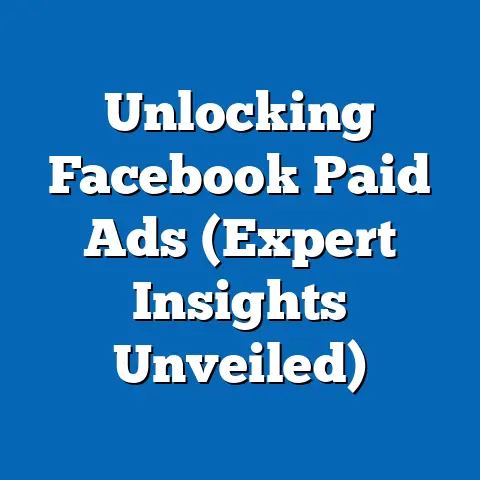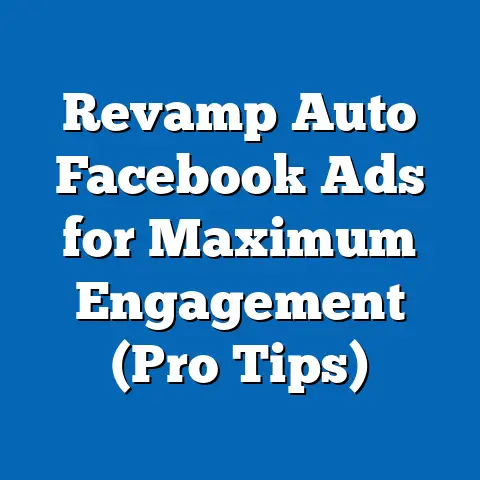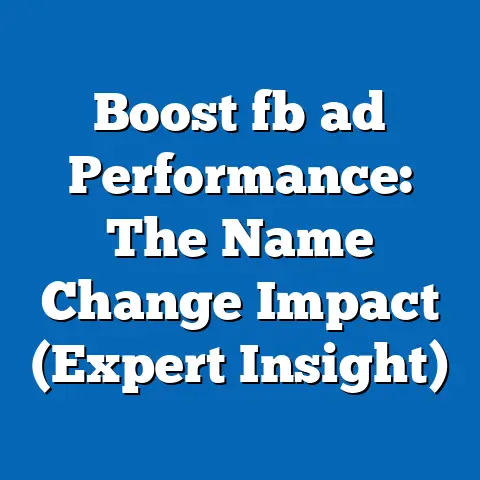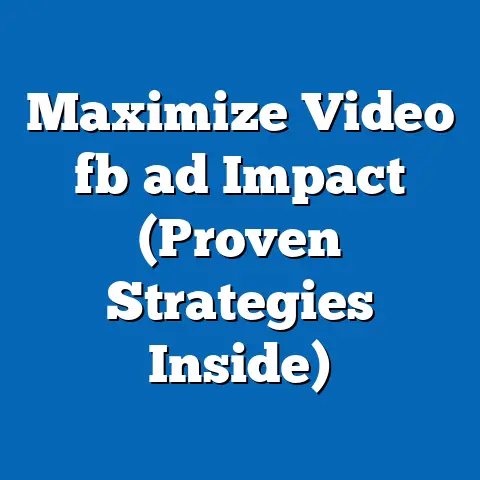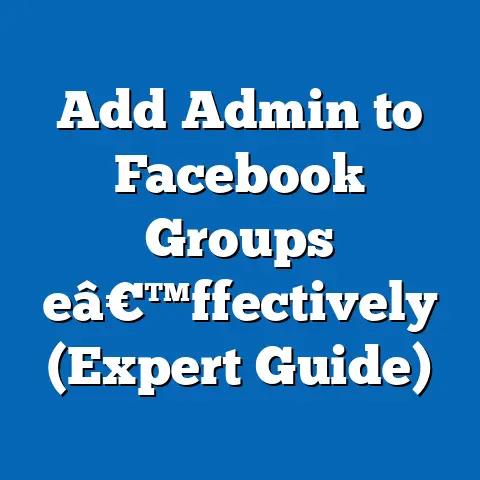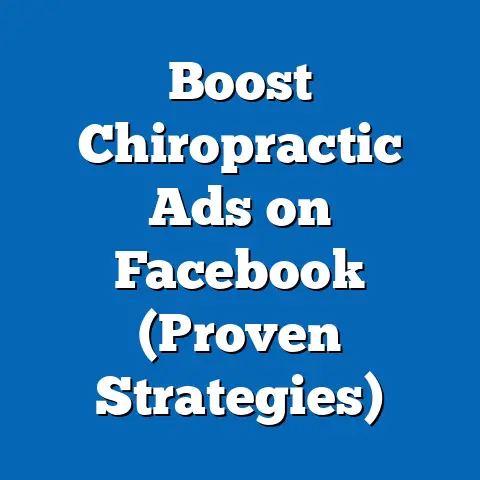Maximize ROI from Instagram & Facebook Ads (Expert Strategies)
Imagine your home. You wouldn’t leave all the lights on all day, would you? You’d be conscious of your energy consumption, looking for ways to save without sacrificing comfort or quality of life. In the same vein, are you truly maximizing your return on investment (ROI) when it comes to your Instagram and Facebook ads, or are you burning through your budget without seeing the results you deserve?
Just as energy-efficient practices can lead to substantial savings without compromising our lifestyle, smart and strategic advertising can yield high returns without requiring you to break the bank. As a digital marketing expert with years of experience navigating the ever-evolving landscape of social media advertising, I’ve seen firsthand how businesses can transform their online presence and drive sales by leveraging the power of Instagram and Facebook ads.
These platforms are no longer just social networks; they are powerful marketing tools that, when used correctly, can deliver exceptional results. In fact, according to Statista, Facebook reported over 2.91 billion monthly active users as of the first quarter of 2024, and Instagram boasts over 2 billion monthly active users. These staggering numbers highlight the immense potential these platforms offer for reaching a diverse and engaged audience.
Understanding the Platforms
Before you even think about creating an ad, it’s crucial to understand the unique landscape of Facebook and Instagram. While both platforms are owned by Meta, they cater to different audiences and offer distinct advertising opportunities.
Facebook, the elder statesman of social media, is known for its broad demographic reach, appealing to a wide range of age groups and interests. According to Pew Research Center, as of 2023, about 68% of U.S. adults use Facebook. This platform is particularly effective for reaching older demographics, building brand awareness, and driving traffic to your website.
Instagram, on the other hand, is a visually driven platform that resonates strongly with younger audiences. With its emphasis on photos and videos, Instagram is ideal for showcasing products, building brand personality, and engaging with a highly active community. Hubspot reports that the platform sees over 500 million active daily users, making it a prime location to get your brand noticed.
Think of it this way: Facebook is like a town square, where people gather for news, discussions, and community events. Instagram is like a vibrant art gallery, where visual storytelling and creative expression reign supreme.
When deciding which platform to focus on, consider your target audience. Are you trying to reach millennials and Gen Z? Instagram might be your best bet. Are you targeting a broader demographic, including older generations? Facebook could be the more effective choice. It’s also important to consider your campaign goals. Are you looking to drive traffic to your website? Facebook’s link ads can be highly effective. Are you aiming to build brand awareness and showcase your products? Instagram’s visually rich format is perfect for that.
Takeaway: Don’t treat Facebook and Instagram as interchangeable. Understand their unique strengths and tailor your strategy accordingly.
Setting Clear Objectives
Imagine embarking on a road trip without a destination in mind. You might enjoy the scenery along the way, but you’re unlikely to reach any specific goal. The same principle applies to advertising: without clear objectives, your efforts are likely to be scattered and ineffective.
Before launching any ad campaign, take the time to define what you want to achieve. Are you looking to increase brand awareness, generate leads, drive sales, or something else entirely? Your objectives will shape every aspect of your ad strategy, from your targeting to your creative execution.
Here are some common advertising objectives to consider:
- Brand Awareness: Increase recognition and familiarity with your brand.
- Reach: Show your ad to the maximum number of people within your target audience.
- Traffic: Drive visitors to your website or landing page.
- Engagement: Encourage likes, comments, shares, and other forms of interaction with your ad.
- Lead Generation: Collect contact information from potential customers.
- Conversions: Drive specific actions, such as purchases, sign-ups, or downloads.
The key is to make your objectives SMART:
- Specific: Clearly define what you want to achieve.
- Measurable: Establish metrics to track your progress.
- Achievable: Set realistic goals that are within your reach.
- Relevant: Ensure your objectives align with your overall marketing goals.
- Time-bound: Set a deadline for achieving your objectives.
For example, instead of simply saying “I want to increase sales,” a SMART objective might be: “Increase online sales by 15% within the next quarter.”
By setting clear, measurable objectives, you’ll be able to track your progress, identify what’s working and what’s not, and make informed decisions to optimize your campaigns for better results.
Takeaway: Define SMART objectives before launching any ad campaign. This will provide a clear roadmap for your efforts and enable you to measure your success.
Targeting the Right Audience
Imagine trying to sell snow shovels to residents of Miami. No matter how compelling your ad copy or attractive your visuals, you’re unlikely to make many sales. The key to successful advertising is reaching the right people with the right message at the right time.
Facebook and Instagram offer a wealth of targeting options, allowing you to reach highly specific audiences based on demographics, interests, behaviors, and more. By leveraging these options, you can ensure that your ads are seen by people who are most likely to be interested in your products or services.
Here are some of the targeting options available:
- Demographics: Target users based on age, gender, location, education, job title, and other demographic characteristics.
- Interests: Reach users who have expressed an interest in specific topics, hobbies, or activities.
- Behaviors: Target users based on their online behavior, such as their purchase history, website visits, and app usage.
- Custom Audiences: Upload your own customer data (e.g., email addresses, phone numbers) to create custom audiences of existing customers or leads.
- Lookalike Audiences: Create audiences that are similar to your existing customers or leads. Facebook will identify users who share similar characteristics and behaviors, allowing you to reach potential new customers who are likely to convert.
To make the most of these targeting options, it’s essential to create detailed buyer personas. A buyer persona is a fictional representation of your ideal customer, based on research and data about your existing customers. By understanding your ideal customer’s demographics, interests, behaviors, and pain points, you can create more targeted and effective ad campaigns.
For instance, if you’re selling organic baby food, your buyer persona might be a millennial mom who is health-conscious, environmentally aware, and active on social media. You could then target your ads to users who are interested in organic food, parenting, and sustainable living.
I once worked with a local bakery that was struggling to attract new customers. By creating detailed buyer personas and leveraging Facebook’s targeting options, we were able to reach a highly specific audience of local residents who were interested in artisanal breads and pastries. Within a few weeks, the bakery saw a significant increase in foot traffic and sales.
Takeaway: Don’t guess who your ideal customer is. Research, create buyer personas, and leverage Facebook and Instagram’s advanced targeting options to reach the right audience.
Crafting Compelling Ad Creatives
Imagine scrolling through your Facebook or Instagram feed. What makes you stop and pay attention to an ad? It’s likely the visuals, the copy, and the call to action (CTA) working together in perfect harmony. These are the essential elements of high-performing ad creatives.
Your visuals are the first thing people will notice, so it’s crucial to make them eye-catching and relevant to your target audience. Use high-quality images or videos that showcase your products or services in an appealing way. Consider using bright colors, bold typography, and engaging imagery to capture attention.
For example, if you’re advertising a travel agency, use stunning photos or videos of exotic destinations. If you’re promoting a new software product, use a visually appealing demo video that highlights its key features and benefits.
Your copy should be concise, engaging, and persuasive. Clearly communicate the value proposition of your product or service and explain how it can solve your target audience’s problems. Use strong verbs, compelling headlines, and benefit-oriented language to grab attention and pique interest.
Finally, your CTA should be clear, concise, and action-oriented. Tell people exactly what you want them to do, whether it’s visiting your website, making a purchase, or signing up for a newsletter. Use strong action verbs like “Shop Now,” “Learn More,” or “Get Started.”
A/B testing is crucial for optimizing your ad creatives. Try different visuals, headlines, copy variations, and CTAs to see what resonates best with your audience. Facebook and Instagram’s ad platforms make it easy to run A/B tests and track the performance of different ad creatives.
I once worked with an e-commerce client who was struggling to get clicks on their Facebook ads. By A/B testing different ad creatives, we discovered that images featuring real customers using their products performed significantly better than stock photos. We also found that headlines that emphasized the benefits of their products (e.g., “Get Rid of Acne in 7 Days”) generated more clicks than generic headlines (e.g., “Shop Our New Products”).
Takeaway: Invest time and effort in creating compelling ad creatives that capture attention, communicate value, and drive action. Don’t be afraid to experiment with different visuals, copy variations, and CTAs to see what works best.
Budgeting and Bidding Strategies
Think of your advertising budget as fuel for your car. You need enough fuel to reach your destination, but you don’t want to waste it by driving inefficiently. The same principle applies to advertising: you need to allocate enough budget to achieve your objectives, but you also need to optimize your bidding strategies to ensure you’re getting the most bang for your buck.
Facebook and Instagram offer a variety of budgeting options, including daily budgets and lifetime budgets. A daily budget sets a fixed amount that you’re willing to spend each day, while a lifetime budget sets a total amount that you’re willing to spend over the entire duration of your campaign.
When choosing between these options, consider your campaign goals and timeline. If you’re running a short-term campaign with a specific end date, a lifetime budget might be the best choice. If you’re running an ongoing campaign, a daily budget might be more appropriate.
Facebook and Instagram also offer a variety of bidding strategies, including cost-per-click (CPC), cost-per-impression (CPM), and cost-per-action (CPA). CPC bidding charges you each time someone clicks on your ad, CPM bidding charges you for every 1,000 impressions your ad receives, and CPA bidding charges you when someone takes a specific action, such as making a purchase or signing up for a newsletter.
The best bidding strategy for you will depend on your campaign goals and target audience. If you’re looking to drive traffic to your website, CPC bidding might be the most effective choice. If you’re looking to increase brand awareness, CPM bidding might be more appropriate. If you’re looking to generate leads or drive sales, CPA bidding might be the best option.
It’s also important to monitor your ad spend and make adjustments as needed. If you’re not seeing the results you want, try adjusting your budget, bidding strategy, or targeting options. Don’t be afraid to experiment and see what works best for your business.
I once worked with a startup that was on a tight budget. By carefully analyzing their ad performance and optimizing their bidding strategies, we were able to significantly reduce their cost-per-acquisition (CPA) and generate a much higher ROI.
Takeaway: Choose the right budgeting and bidding strategies based on your campaign goals and target audience. Monitor your ad spend and make adjustments as needed to optimize your ROI.
Analyzing Performance and Making Adjustments
Imagine you’re a chef experimenting with a new recipe. You wouldn’t just throw ingredients together and hope for the best, would you? You’d taste the dish along the way, make adjustments to the seasoning, and refine the recipe until it’s perfect. The same principle applies to advertising: you need to track your ad performance, analyze the data, and make adjustments to optimize your campaigns for better results.
Facebook Ads Manager and Instagram Insights provide a wealth of data about your ad performance, including impressions, clicks, click-through rates (CTR), conversion rates, and return on ad spend (ROAS). By monitoring these key performance indicators (KPIs), you can gain valuable insights into what’s working and what’s not.
For example, if your CTR is low, it might indicate that your ad creatives are not compelling enough. If your conversion rate is low, it might suggest that your landing page is not optimized for conversions. If your ROAS is negative, it means you’re spending more on advertising than you’re generating in revenue.
Use this data to make informed decisions about how to refine your ad campaigns. Try A/B testing different ad creatives, targeting options, or bidding strategies to see what improves your performance. Don’t be afraid to experiment and try new things.
I once worked with a retail client who was struggling to generate online sales. By analyzing their ad performance data, we discovered that their mobile ads were performing poorly compared to their desktop ads. We then optimized their mobile ads by using larger images, shorter headlines, and more prominent CTAs. As a result, their mobile conversion rate increased significantly, and their overall sales improved.
Takeaway: Track your ad performance, analyze the data, and make adjustments to optimize your campaigns for better results. Don’t be afraid to experiment and try new things.
Conclusion
Just as energy savings require thoughtful planning and execution, so too does successful advertising. By following the expert strategies outlined in this article, you can maximize your ROI from Instagram and Facebook ads and drive meaningful results for your business.
Remember to:
- Understand the unique strengths of each platform.
- Set clear, measurable objectives.
- Target the right audience with precision.
- Craft compelling ad creatives that capture attention.
- Choose the right budgeting and bidding strategies.
- Analyze your performance and make adjustments as needed.
With the right approach, Facebook and Instagram ads can be a powerful tool for growing your business and achieving your marketing goals. So, take the time to implement these strategies, track your progress, and refine your approach as needed. The results will be well worth the effort. Now go out there and create some amazing ad campaigns!

